
The Family of France
The first French empire died on the field of Waterloo in 1815. The Prussian troops and Parisian rebels ended the Second Empire in 1871. But through these and other violent fluctuations in French political life, the real French Empire the empire of her colonial possessions around the world ‹ grew steadily throughout the nineteenth century. After the first World War, France found herself in possession of the most extensive colonial empire in the world: some 47 nations whose official language was French and whose governments were under some degree of obligation to France. To bring these peoples together in the capital city in order to educate the French nation as to the importance of their colonies this was the primary goal of the Exposition Coloniale et Internationale de Paris.
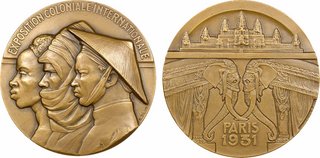
The unspoken philosophy of the exposition, however, was the same mission civilisatrice that had guided and justified French foreign policy for more than a century. To colonize does not mean merely to construct wharves, factories, and railroads, wrote Le Maréchal Lyautey, Commissioner General of the exposition. It means also to instill a humane gentleness in the wild hearts of the savannah or the desert. One of the goals of the exposition, therefore, was to demonstrate that the French colonial effort was achieving those goals, and that colonial industry, however primitive when compared to the achievements of the civilized world, was showing promising signs of advancement from savagery to civilization.
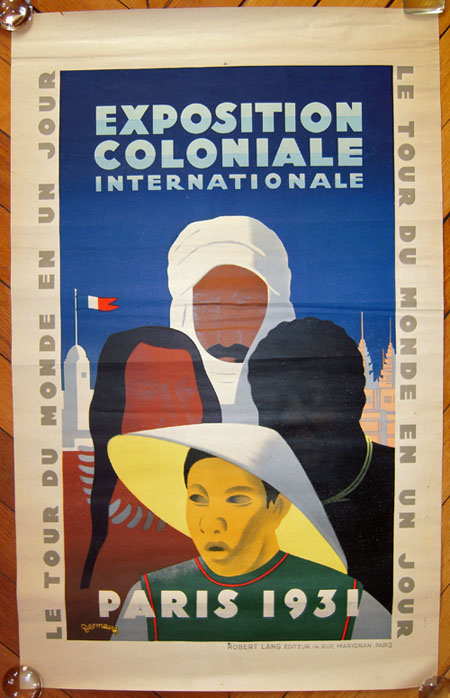
But if the exposition coloniale were to be more than an elaborate display of French policy, it had to be shown that other civilized nations had the same goals, and that the will of the West to continue its civilizing mission was still strong. Pierre Deloncle, writing for Illustration, provided the proper rhetoric for proclaiming the colonial effort to be a common destiny for Western civilization as a whole:
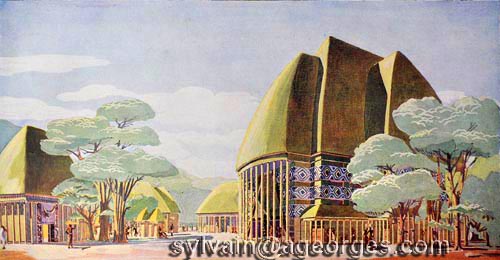
At a time when certain intellectuals and political parties are freely talking of a failure or a ³decline of the west, the colonial exposition at Vincennes comes at a ripe moment to affirm that the great European nations (and the United States with them) are not in the least disposed to acknowledge this failure or to renounce the civilizing mission that have undertaken.
In this light, the exposition coloniale takes on the air of an elaborate justification: a proof, to herself and to other colonizing powers, that the task of bringing civilization to the uncivilized is a task undertaken by Europe and America. Attacked from the left for their paternalistic and exploitative attitudes, and by the right for a failure of nerve, French supporters of the colonial enterprise looked upon the exposition as an opportunity to furnish proof to the world that colonialism was accomplishing its noble goals.
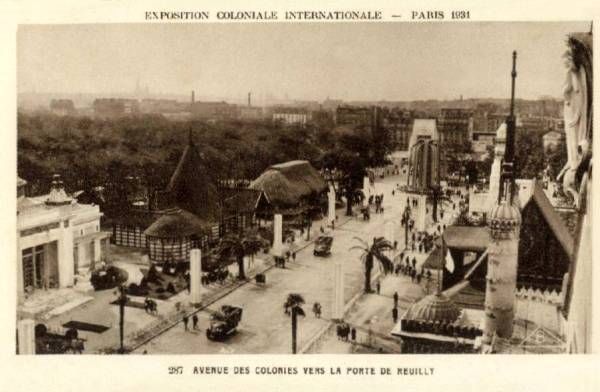
A Quarter Century of Planning
The 1931 colonial exposition was the culmination of 25 years of planning and thought. A National Committee for Colonial Expositions had been formed in 1906, with the express purpose of advancing the belief that France was now both an empire and a republic and empire with respect to her protectorate, a republic at home. In 1912, Minister of Colonies Albert Lebrun urged that Paris should host a colonial exposition, and that the spike of the fair should be the creation of a permanent museum devoted to the art and society of the colonies. Accordingly, on June 23, 1913, a decree was signed affirming these principles, and designating Paris as the host city, since Paris is without question the capital of such great expositions. In the capital, the brilliance of these fairs covers all of France, and indeed illuminates the universe. A tentative date of 1916 was set for the colonial exposition.
There soon arose the almost inevitable opposition from the provinces, with the city of Marseilles leading the way. Such objections to the hegemony of Paris had long been part of the controversy in France surrounding world's fairs. But this time, the provinces were not to be swept aside so easily. Marseilles was the second largest city in France, and possessed considerable economic resources and political power to combat Paris.

In addition to the usual argument that the honor and profit resulting from expositions always went to the head of France rather than to her body, the provinces loyal citizens of Marseilles questioned whether Paris was in other respects the appropriate place to stage a colonial exposition. After all, the skies there are too often gray and rainy. The weather of Marseilles is much closer to the climate of the tropical colonies, the Marseilles supporters argued. In addition, Marseilles was, by its seagoing nature, more adventuresome than Paris, which, according to Charles Roux, was made up of mere explorers of the shrubbery along the boulevards.
The events of the First World war overwhelmed this controversy for the time being. But in 1920, the battle between Paris and Marseilles was joined again. In defiance of the capital, Marseilles opened its own national colonial exposition in 1922. Though it was restricted to exhibits featuring French colonies, many of the buildings that would arise in Paris in 1931 were first anticipated by the Marseilles exposition ‹ notably the thatched African village huts and the temple of Angor Wat.
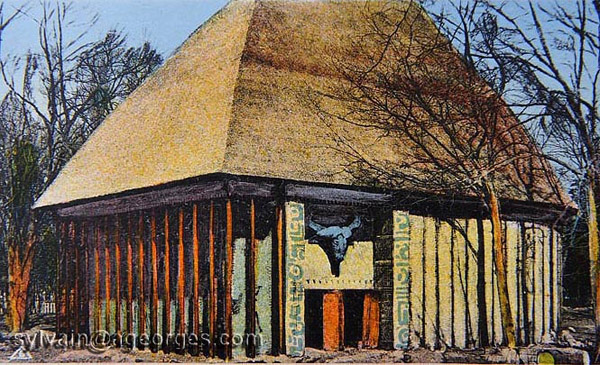
Paris could afford to cede precedence to Marseilles. While plans and negotiations for the Parisian colonial exposition were under discussion, Paris hosted the Art Deco fair of 1925. Though not directly related to the colonial exposition that would come six years later, the art deco fair had one major impact on the later event. Parisians were not willing for the heart of their city to be desecrated for six years with the noise and dust emanating from the building and demolition of two large expositions. As a consequence, the colonial exposition planners turned their thought to other suitable locations for their event.
After a good deal of debate, it was finally decided that the colonial exposition should take place in Vincennes, the site of an old royal castle and, since the days of Napoleon III, a lovely public park. Bonds were sold, and a guaranty company formed to secure the necessary financing for the venture. To head up the entire affair, the government appointed Le Maréchal Lyautey, a distinguished and experienced military man. Lyautey had been in charge of the Franco-Morrocan colonial exposition held in Casablanca in 1915, and held definite ideas about how such an affair should be organized.5 Though appointed chief commissioner of the exposition coloniale in 1927, he resisted all attempts to hurry preparations, insisting that 1931 was the earliest date by which the event could be launched successfully. Once the date was set, however, Le Maréchal insisted that all exhibits had to be completely finished fifteen days before the May 6 opening date. Any exhibitors failing to meet this requirement would find their unfinished exhibits torn down and hauled away at their expense!
All work was finished on time.
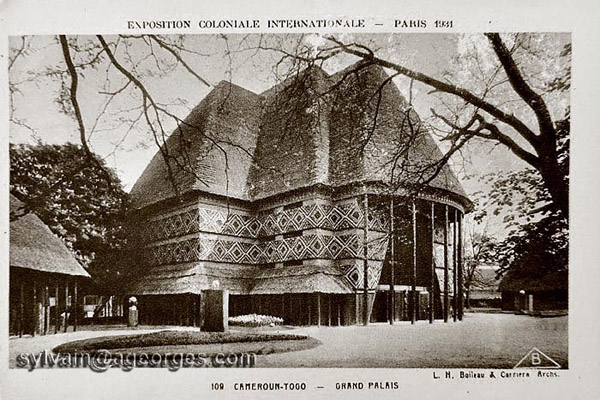
Colonial Enterprises
The buildings and grounds of the event covered some 500 acres of land ‹ making it the most extensive exposition in French history. The fair surrounded the Daumesnil Lake, with its two islands, and included a substantial zoological garden. Broad avenues and ample distance between buildings gave the exposition a spaciousness unknown in previous world¹s fairs in the capital city. For the first, and perhaps the only time in the history of Parisian expositions, there were no complaints about a shortage of exhibit space.
All countries had more than enough room for their displays; but the list of exhibiting countries is a curious one. Some nations, for a variety of reasons, chose not to erect national pavilions. England, who harbored similar feelings about her own empire on which the sun never set, could see little profit in bringing her subject peoples to Paris. Germany had been stripped of her colonial possessions as a result of her defeat in the First World War, and felt the urge to come to Paris simply to gaze on former possessions that were now Sous Mandat protectorates of France. Many countries, including England and Germany, contented themselves with informational displays in the City of Information building next to the main Entranceway of Honor.
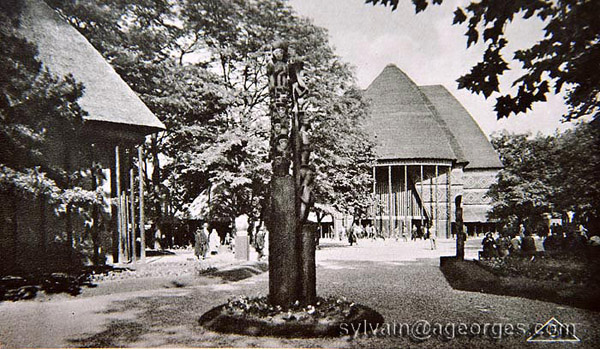
The host country of an exposition typically took a plurality of the exhibition acreage, and naturally outshone her rivals by the sheer quantity of her exhibits. But the colonial exposition of 1931 carried this tendency to its conclusion. France completely dominated the colonial exhibits, as she meant to. The exposition was conceived primarily as an attempt at fostering a communal feeling of solidarity among her colonies. Indigenous peoples from French colonies around the globe would come to Paris and feel a surge of pride in belonging to such a glorious enterprise ‹ such was the hope.
Those nations that did erect pavilions did so with a variety of motives. Italy, which had little to show in the way of grand colonial enterprises, proudly displayed the history of her colonizing in the days of the Roman Empire. The Italian pavilion itself was a reconstruction of the basilica of Septimus Severus, erected in Libya during the era of Imperial conquest. Commissioner general Lyautey himself commented on the union of force and beauty of the Italian pavilion. The new Italian colonial ventures in Tripoli and Somalia were thus given historical perspective and, in the eyes of the exhibitors, justification.
Other exhibiting European nations proudly set forth, in pavilions built along the lines of native architecture, the efforts of the mother countries to improve the life of the indigenous peoples in their colonies. Displays of schoolhouses, medical equipment, and improved transportation all pointed to the good done by Holland, Belgium, Portugal, and other European powers in the lands they had chosen to occupy. Close by these exhibits were others that told the story of why the European powers were there in the first place: raw materials. Displays of coffee, rubber, precious metals and exotic foodstuffs were accompanied by impressive statistics showing how valuable colonial products were for their master countries.
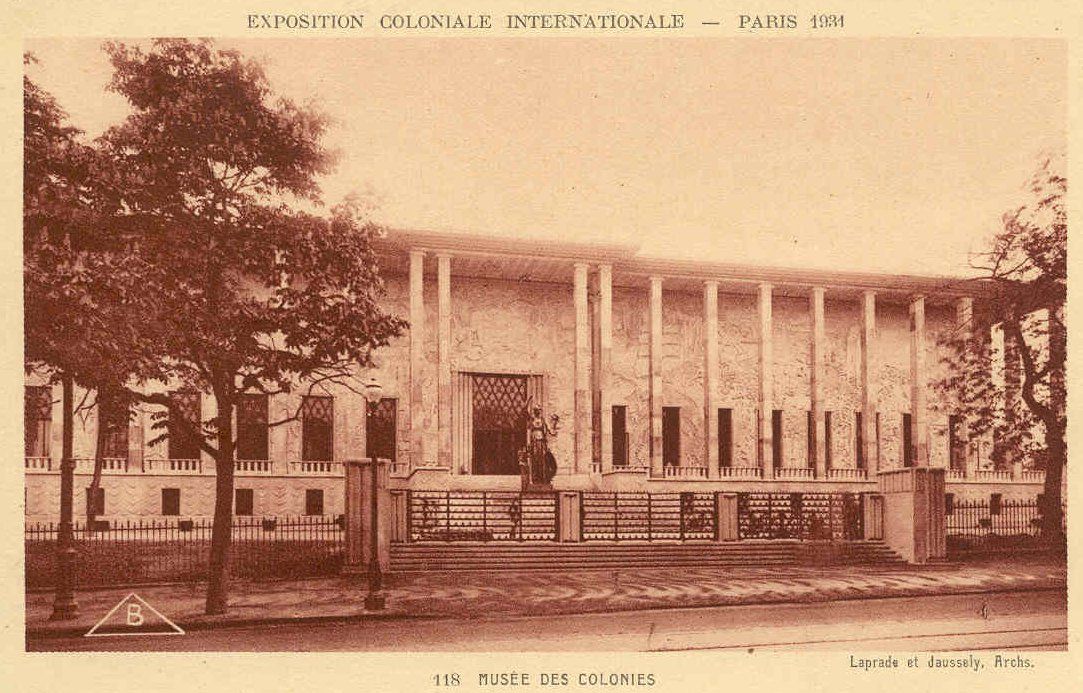
Only one pavilion seemed to show unqualified altruism. Denmark's building at the exposition featured her efforts to colonize Greenland. Dioramas showed Esquimeaux and their dog trains surrounded by the bleak landscape and bitter cold of the largest island in the world. No shipments of gold or cinnamon, pepper or petroleum: only an unremitting battle against the elements, with the Danish government contributing its scientific expertise to make life in Greenland more tolerable.
The United States was the only non-European country exhibiting as a colonial power. The American building at the exposition was a close replica of George Washington's house at Mount Vernon, complete with the bedroom set aside for Lafayette a gesture that pleased the French hosts enormously. The inherent irony of the American exhibit ‹ that it was housed in a building of the man who led the fight against colonial tyranny in the United States ‹ was evidently completely lost on both the French and the Americans. Flanking the Mount Vernon building, but constructed in a style that blended harmoniously with the main structure, were a series of cottages featuring displays of America's burgeoning colonial empire: Alaska, Hawaii, Puerto Rico, the Virgin Islands, and Samoa all of which were presenting themselves for the first time at a Parisian exposition.
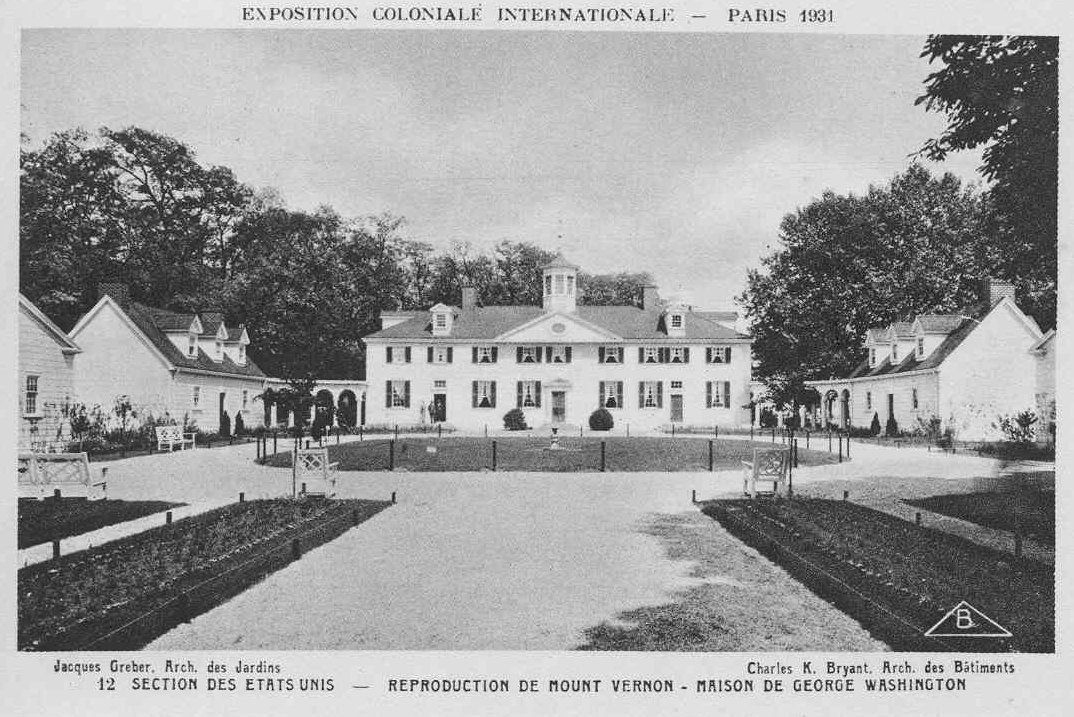
But the American and other, non-French pavilions were mere side shows compared to the splendor of the exhibits of the French colonies. A circular train, mounted on a narrow-gauge railway, would carry visitors around the Lac Dausmenil, stopping at the foreign pavilions, and finally depositing voyagers at the head of the Grande Avenue des Colonies Françaises. On this grand avenue, and on several of the radiating streets, stood the splendid and exotic structures representing the indigenous architecture of the French colonials in Africa, the Near East, the Fair East, and Oceania.
North African nations had long been present at Parisian expositions; and visitors who had attended earlier fairs could recognize the familiar perfumes, carpets, ornamented brass and hand-tooled leather, the exotic food served by colonials who spoke French in clipped, harsh accents. Still, the experience of dining at exotic eateries was new and strange to many visitors. One woman, having ordered pilaf in a Maroccan restaurant, sat waiting in anticipation of some bubbling concoction of native plants and the flesh of wild beasts. When the dish was served, she could only berate the waiter, in tones of disappointed outrage, Why, this is only rice! Two observers, Jean Camp and André Corbier, complained in their account that many such restaurants offer us dishes with barbarous names which only attempt to disguise vegetable soup, stewed chicken, and little peas à la Française.
But to most Parisians, the Arabic colonies were familiar stuff. Far more interesting were the West Indian and African nations, some of which had been acquired only since the time of the First World War. French audiences had been primed to appreciate more of black culture since the triumphant conquest of Parisian entertainment by American jazz musicians and the talents of Josephine Baker. She had captured the imagination of the Parisian chic monde, and many of the lily whitest of women were now sporting tans as signs of their own inner tropic nature. In the pavilion of Guadeloupe, one could attend a festival where brightly-garbed performers mixed French, African, and Indian moods in their dances, while onlookers could enjoy the tangible pleasures of native rum or cocoa. To go native became the in thing to do among trend-conscious Parisians and international fellow-travellers.
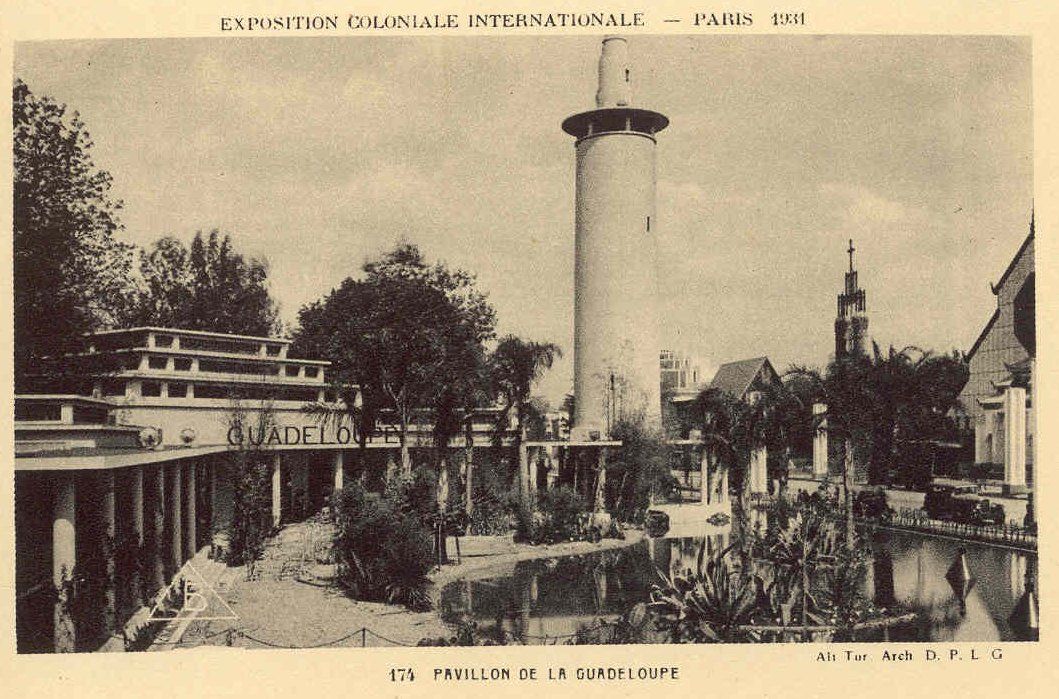
The African pavilions were huge structures of wood covered over with bulky thatching ‹ and designed by French architects. Inside, dioramas told of the history of French civilizing influences in each country, and of the native handiworks. Graphs showed the decline in mortal illnesses and an improvement in physical health throughout the French protectorates. To preserve the authenticity of feeling at these pavilions, an exposition regulation stipulated that no Africans, or any other colonials, could wear European clothing on the fairgrounds.
The Madagascar display saw two distinct variations on the otherwise unvarying African displays of French pride and native artisanship. For one event, two authors, Pierre Camo and Roger Chardon, conceived of the idea of tapping into the great African oral tradition by creating an epic hymn to colonial enterprise. A Madagascar actor was hired to memorize the text; and he then appeared at one of the evening fetes to recite such ecstatic tropes as : Every year our factories send forth six thousand tons-worth of cooking pots to France. Perhaps the authors hoped that this prose and prosaic epic would work its way into native oral culture, and instill the natives with a sense of ritual awe at their own contributions to the mother country.
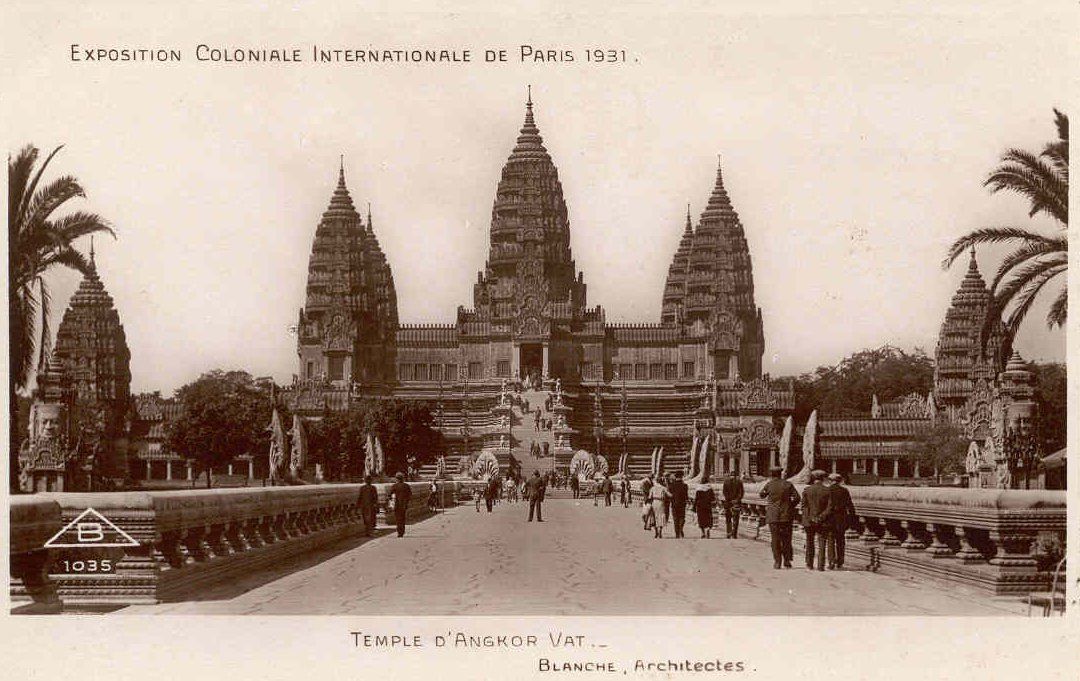
Meanwhile, outside the exhibit building, an odd skit was taking place. A Madagascar woman rounded up one of her little boys, stood him up in a tub and proceeded to wash him down with clear water. As the scrubbing advanced, the child glistened with cleanliness, but the water turned progressively dirtier. Finally, the woman reached down, scooped up a bottleful of the liquid, and had the boy drink it down. According to Jean Camp and André Corbier, visitors came away persuaded that this was how the black race maintained its shadowy color.
The most imposing structure on the Avenue of French Colonies ‹ indeed, the most impressive of all structures at the exposition, was the Temple of Angor Wat, a faithful rendition of the original Cambodian structure by the French architectural firm of Charles and Gabriel Blanche. Inside the temple, visitors encountered the dutiful array of statistics and displays of agricultural production, as well as a panoramic account of the history of Indo-China. But it was the sheer size and grandeur of the building itself that drew people to the Angor Wat temple. Surely here, visitors might think, is a symbol of grandeur from another culture ‹ proof that they, too, had architectural traditions as lofty as any in Europe.
But Angor Wat did not symbolize, for the exposition organizers, any such grandeur. In fact, according to Claude Farrere, The temples of Angor symbolize not so much a unified and indivisible Indo-China this is a puerile concept of Soviet politicians and their ignorant dupes ‹ as a dead civilization killed by the worst sort of native violence, a civilization which France is attempting to revive today.
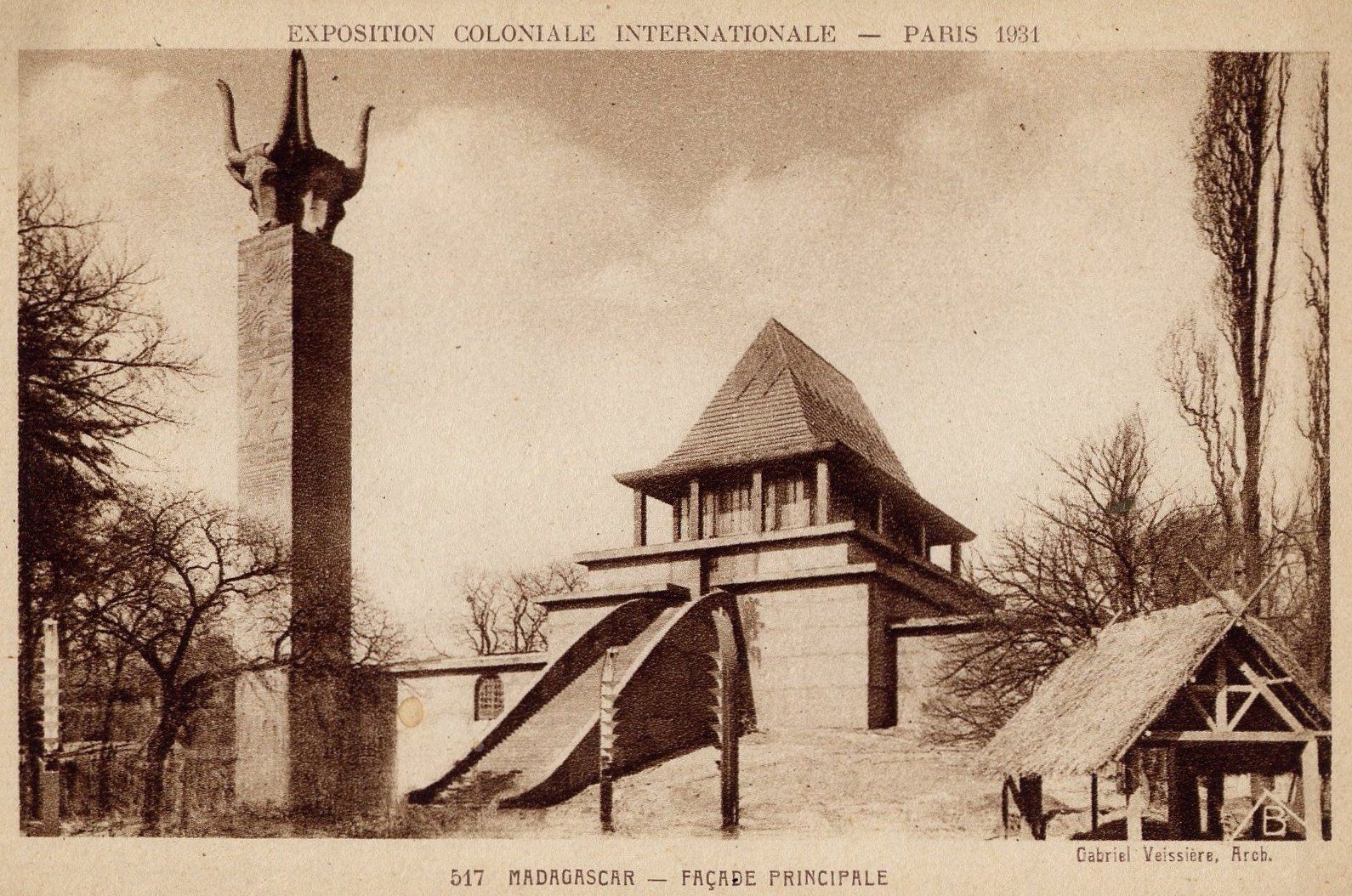
The Angor Wat temple represented, for the supporters of French colonial policy, all that the mother country was attempting to do, in the face of public indifference and political hostility from the left. In humanitarian terms, French colonial policy makers felt genuinely that France could and should exert her powerful civilizing influence on the under-developed nations of the world. After all, was not Paris the major civilizing city in Western civilization? Could France do anything less than bring the best of Western methods of industrial production, medicine, and fair governance to nations previously suffering under the tyranny of bloodthirsty despots?
The urge to bring civilization to savage lands had not always been in the hands of governments, of course. For centuries, religious institutions had sent out missionaries to convert natives to Christianity and to halt practices which, in the views of their leaders, were abhorrent to God. The exposition coloniale featured an entire Pavilion of Missions, in which Protestant and Catholic missionary enterprises displayed their philosophies of assistance and conversion. France, which had consciously begun to exclude the Church from any official connection to the universal expositions in 1878, now welcomed both Protestant and Catholic missionaries back into the official governmental fold as an important useful element of the Civilizing Mission.
Supporters of the missionary effort were aware that there efforts were not without opposition in France. Such opposition, however, was seen by the missionaries and their advocates simply as a desire to keep primitive proples in a prolonged state of infancy. After all, wrote Jérome and Jean Tharaud, the European position with respect to her colonies is very similar to our position in Europe when it became necessary to draw us out of the paganism of the Celts, Germans, and Slavs.²9 The religious element of colonization is therefore a necessary and fitting component of the civilizing process (source: http://charon.sfsu.edu/PEF/1931a.html)

Hello. I was thinking about adding a backlink back to your blog since both of our sites are primarily based around the same niche.
ReplyDeleteWould you prefer I link to you using your website address:
http://www.blogger.com/comment.g?blogID=6971823835434059276&postID=7088168010269155058 or web site title: Blogger:
US Slave. Please make sure to let me know at your earliest convenience.
Thanks!
Stop by my blog post; removal prices